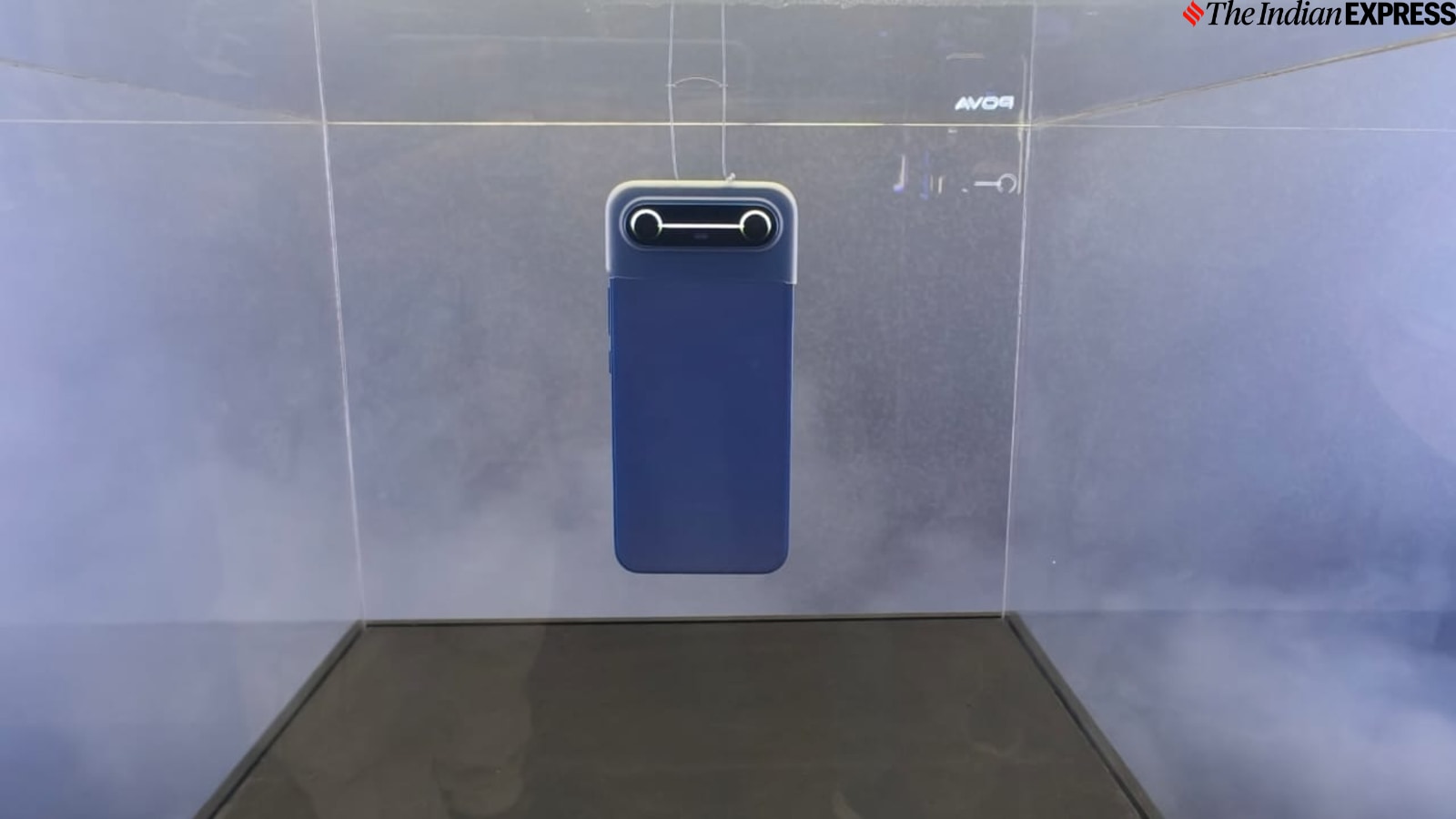Tecno is the latest smartphone brand to lean heavily into the thin-phone trend with its just-launched Pova Slim 5G, which measures only 5.95mm in thickness and weighs just 156 grams.
Although thinness was never heavily marketed as a key smartphone feature, brands may now be willing to take a chance on whether consumers actually want ultra-slim devices, which many see as a promising new category of phones.

The trend appears to be heading in that direction, with companies like Samsung, Huawei, Honor, and Oppo launching slim phones in the hope that consumers resonate with them. However, devices like the Samsung Galaxy S25 Edge come with higher price tags than standard premium smartphones.
With smartphone designs having become increasingly predictable in recent years, it remains to be seen whether consumers truly demand ultra-thin devices and whether they are willing to compromise on key features, such as better cameras and longer battery life.
“You pick up any brand and look at the back of the phone, they all look almost the same. There might be some differences in the sides, camera placement, or colour, but overall, they are similar-looking devices. Everyone is talking about the camera, RAM, and display,” says Tecno Mobiles India CEO Arijeet Talapatra, explaining why it was necessary to launch a smartphone with a distinct identity, a remarkably slim device unlike anything consumers have seen before.
“People don’t want a big battery phone that’s heavy. Foldable devices didn’t take off the way we expected because consumers are only using the secondary display about 20 per cent of the time, and 80 per cent of the time it’s the primary display. So if you are mostly using the primary screen, why carry such a heavy phone? Even if you make a foldable device lightweight, it’s still much, much heavier than a regular phone,” adds Talapatra.
 The Tecno Pova Slim feels superlight. (Image credit: Anurag Chawake/Indian Express)
The Tecno Pova Slim feels superlight. (Image credit: Anurag Chawake/Indian Express)
‘A design that’s truly different’
Despite being ultra-slim, almost as skinny as a standard pencil, Tecno’s Pova Slim packs a large 6.78-inch AMOLED display, a sizeable 5,160 mAh battery, dual rear cameras, and comes with a price tag of Rs 19,999 (approximately $226). That places the Pova Slim in the affordable segment, yet it offers a significantly larger battery than the Galaxy S25 Edge’s 3,900 mAh, and dual cameras on the back.
Story continues below this ad
Talapatra believes the Pova Slim 5G will help make thin smartphone designs more mainstream and accessible, something the brand has always been known for, thanks to its strong offline presence and focus on tier-3 and tier-4 parts of India.
“We are offering a design that is truly different. When you place our phone alongside all the other brands, it clearly stands out. We are launching our smartphone at a competitive Rs 15,000 to Rs 20,000 price, and we clearly stand out from the competition,” he says.
The Pova Slim 5G is made in India, and as Talapatra mentions, there are plans to export the device to other countries. Tecno, which is part of the Transsion Group, has three factories in India and a corporate office in Noida, Uttar Pradesh.
 Tecno Mobiles India CEO Arijeet Talapatra. (Image credit: Tecno India)
Tecno Mobiles India CEO Arijeet Talapatra. (Image credit: Tecno India)
Charting competition
Talapatra counts Vivo and Oppo as Tecno’s competitors – not Apple and Samsung. “They are at very different price points, and that price point is something only a few consumers can afford,” he adds.
Story continues below this ad
However, Talapatra admits that the brand does keep track of what its competitors are doing, learns from their mistakes, and then works to improve its own products.
For example, the Pova Slim 5G features a larger battery because, in India, connectivity often fluctuates between 4G and 5G, which leads to higher battery consumption. He also points out that the growing use of AI has led to more consumers spending time on apps, further increasing battery usage.
The launch of the iPhone Air 17 next week, alongside the rest of the iPhone 17 series, is rumoured to feature a 5.5mm-thick profile and a 6.6-inch screen, a move that could potentially bring ultra-thin smartphones into the spotlight.
Even though Tecno doesn’t compete directly with Apple, as both brands cater to different segments and price points, Talapatra states, “Apple’s entry may help us if they bring a slim iPhone to the market.”
Story continues below this ad
 The Pova Slim is priced at Rs 19,999. (Image credit: Anurag Chawake/Indian Express)
The Pova Slim is priced at Rs 19,999. (Image credit: Anurag Chawake/Indian Express)
Mapping consumer behaviour
For Talapatra, Tecno’s business is growing in India, and the brand is performing well in the Rs 6,000 to Rs 20,000 price segment, with the Rs 10,000 to Rs 20,000 range being the primary focus. While he doesn’t see a slowdown in the Indian smartphone market, he acknowledges that it’s not growing as fast as it once did.
“We already have around 151–152 million users, and the shift from 2G to 4G isn’t happening as fast as we expected. The adoption is slower mainly due to the price gap. A 2G phone costs around Rs 700 to Rs 1,200, whereas a 4G phone starts at around Rs 5,000. That’s a huge difference, and many people who can’t afford that jump from Rs 1,200 to Rs 5,000 end up going for refurbished or second-hand phones,”
Talapatra explains.
He adds that earlier the average phone lifespan was about 20 to 24 months, but now, with improved quality across brands, the upgrade cycle has stretched to 36 to 42 months.
While the smartphone market in India isn’t growing as rapidly as it once did, brands continue to launch premium, high-end devices to increase their average selling prices (ASPs) and boost profits. To afford these premium phones, many consumers now opt for monthly EMIs and take advantage of affordability schemes, a growing phenomenon in India.
Story continues below this ad
“If you go to tier-3 and below, people also buy phones on EMI, but many still pay in cash. Even though the same affordability schemes are available in tier-3 and tier-4 cities, their usage is much lower compared to tier-1 and tier-2 cities. It’s a consumption pattern, and maybe the risk-taking tendency is higher in metro areas,” he says.
At a time when smartphone innovation has slowed down and consumers are holding on to their phones for longer, brands are seeking new ways to sell devices. While the trend toward thinner phones may help, as Talapatra and others have indicated, there’s only so much that can be done with hardware.
Talapatra suggests that the next big breakthrough may come from smartphone software, though he didn’t dive into the details.
“We are working on that, and you will see the difference. It will be a major differentiator, especially in the first half of 2026. You will see a lot happening around software. Hardware differentiation can still play a role, but it won’t be the main factor.
“Maybe brands with bigger aspirations can charge a higher premium, but that’s about it. Consumers today are educated; they don’t want to pay a premium just because the brand name is bigger.”



 The Tecno Pova Slim feels superlight. (Image credit: Anurag Chawake/Indian Express)
The Tecno Pova Slim feels superlight. (Image credit: Anurag Chawake/Indian Express) Tecno Mobiles India CEO Arijeet Talapatra. (Image credit: Tecno India)
Tecno Mobiles India CEO Arijeet Talapatra. (Image credit: Tecno India) The Pova Slim is priced at Rs 19,999. (Image credit: Anurag Chawake/
The Pova Slim is priced at Rs 19,999. (Image credit: Anurag Chawake/





